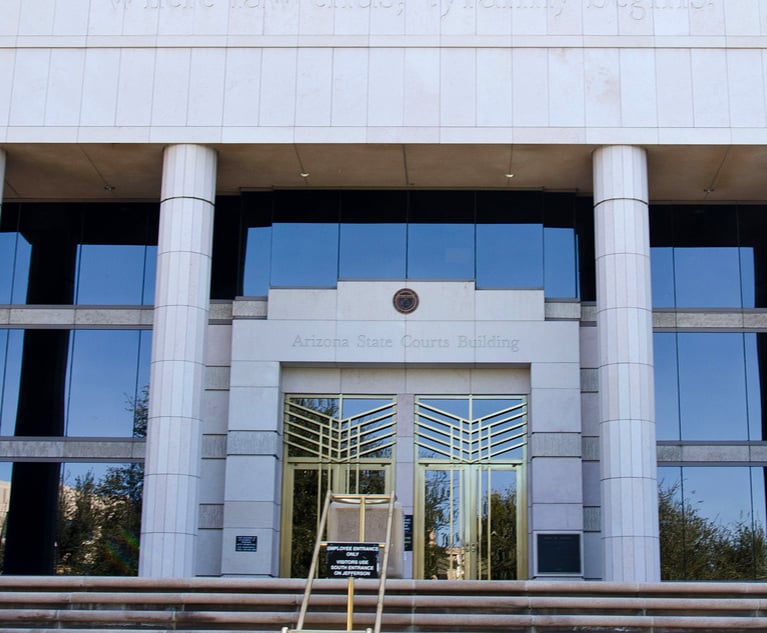Commentary: Addleshaws says it ain't broke, let's fix it anyway
Given that it was regarded as one of the most upwardly mobile mid-market practices in the UK top 50, the question begged by Addleshaw Goddard's decision to remove 19 partners from its ranks is whether it has been mobile enough. Yet Addleshaws, with a practice built on top-tier regional strongholds in Manchester and Leeds and a well-regarded City practice, maintains that the move does not signal weaknesses in its underlying business.The firm talks a decent game, pointing to a solid run of successes in recent months. Among the highlights are debut corporate instructions for six FTSE 100 companies, including Rolls-Royce and Wolseley, as well as new panel appointments to ITV and William Hill. In deals, the firm is understandably proud of its work for the Co-operative Group on its £1.57bn acquisition of Somerfield, a transformational deal for the client. Underlining the firm's strength in the mutual sector is Adam Bennett, who acted on 15 of the last building society mergers. And Legal Week's data provider Mergermarket ranked the firm 10th for volume of UK deals in 2008 - a key benchmark of mid-market strength.
January 28, 2009 at 09:34 PM
3 minute read
Addleshaws' business is by all accounts stable, but about to get smaller
 Given that it was regarded as one of the most upwardly mobile mid-market practices in the UK top 50, the question begged by Addleshaw Goddard's decision to remove 19 partners from its ranks is whether it has been mobile enough. Yet Addleshaws, with a practice built on top-tier regional strongholds in Manchester and Leeds and a well-regarded City practice, maintains that the move does not signal weaknesses in its underlying business.
Given that it was regarded as one of the most upwardly mobile mid-market practices in the UK top 50, the question begged by Addleshaw Goddard's decision to remove 19 partners from its ranks is whether it has been mobile enough. Yet Addleshaws, with a practice built on top-tier regional strongholds in Manchester and Leeds and a well-regarded City practice, maintains that the move does not signal weaknesses in its underlying business.
The firm talks a decent game, pointing to a solid run of successes in recent months. Among the highlights are debut corporate instructions for six FTSE 100 companies, including Rolls-Royce and Wolseley, as well as new panel appointments to ITV and William Hill. In deals, the firm is understandably proud of its work for the Co-operative Group on its £1.57bn acquisition of Somerfield, a transformational deal for the client. Underlining the firm's strength in the mutual sector is Adam Bennett, who acted on 15 of the last building society mergers. And Legal Week's data provider Mergermarket ranked the firm 10th for volume of UK deals in 2008 – a key benchmark of mid-market strength.
Recent years have also seen the firm bolster its much-touted partnership team with the hires of Mayer Brown duo Richard Linsell and William Wastie and Allen & Overy's Rachel Khiara. Yet, while Addleshaws is widely acknowledged to have performed respectably since the 2002 cut of 11 partners and the 2003 merger with Theodore Goddard, it has not all been plain sailing. Given its historical strength in private equity and early links with 3i, the firm arguably should have done more to ride the buyout wave when it was in full flow. Some might argue that Addleshaws has become a little too focused on property in recent years, a factor which explains some of its current retrenchment. Property had come to account for over 30% of the firm's £195.4m turnover in 2007-08, a proportion that is expected to drop to below 25%, though firmwide revenues will shrink this year.
In litigation, Addleshaws – which is not the strongest national player in the other main counter-cyclical area of insolvency – has been investing and, under department head Simon Twigden, has been innovative in embracing external funding.
So if the firm has a good geographic and full service practice spread, what – apart from a somewhat bloated property team – is driving the current partnership restructuring? Addleshaws maintains, and rivals agree, that this practice is one of the most stable and robust in the UK top 25. As such, the firm is billing this move as different to the 2002 restructure, which was aimed at galvanising the partnership and dealing with underperformance.
In contrast, the current exits are billed as a direct response to the recession. And that is what seems so surprising. However tough the market will be for the next two years, partnership is a long-term commitment. Critics say – and it's hard to disagree – that cutting 10% of your partnership when the business is sound smacks of being more than just ruthless – it's short-term.
For more analysis, see Editor's Blog: Addleshaws goes nuclear.
This content has been archived. It is available through our partners, LexisNexis® and Bloomberg Law.
To view this content, please continue to their sites.
Not a Lexis Subscriber?
Subscribe Now
Not a Bloomberg Law Subscriber?
Subscribe Now
NOT FOR REPRINT
© 2025 ALM Global, LLC, All Rights Reserved. Request academic re-use from www.copyright.com. All other uses, submit a request to [email protected]. For more information visit Asset & Logo Licensing.
You Might Like
View All
KPMG's Bid To Practice Law in US On Hold As Arizona Court Exercises Caution

Combative Arguments at EU's Highest Court Over Google's €4.13B Antitrust Fine Emphasize High Stakes and Invoke Trump
4 minute read
Law Firms 'Struggling' With Partner Pay Segmentation, as Top Rainmakers Bring In More Revenue
5 minute readTrending Stories
- 1Uber Files RICO Suit Against Plaintiff-Side Firms Alleging Fraudulent Injury Claims
- 2The Law Firm Disrupted: Scrutinizing the Elephant More Than the Mouse
- 3Inherent Diminished Value Damages Unavailable to 3rd-Party Claimants, Court Says
- 4Pa. Defense Firm Sued by Client Over Ex-Eagles Player's $43.5M Med Mal Win
- 5Losses Mount at Morris Manning, but Departing Ex-Chair Stays Bullish About His Old Firm's Future
Who Got The Work
J. Brugh Lower of Gibbons has entered an appearance for industrial equipment supplier Devco Corporation in a pending trademark infringement lawsuit. The suit, accusing the defendant of selling knock-off Graco products, was filed Dec. 18 in New Jersey District Court by Rivkin Radler on behalf of Graco Inc. and Graco Minnesota. The case, assigned to U.S. District Judge Zahid N. Quraishi, is 3:24-cv-11294, Graco Inc. et al v. Devco Corporation.
Who Got The Work
Rebecca Maller-Stein and Kent A. Yalowitz of Arnold & Porter Kaye Scholer have entered their appearances for Hanaco Venture Capital and its executives, Lior Prosor and David Frankel, in a pending securities lawsuit. The action, filed on Dec. 24 in New York Southern District Court by Zell, Aron & Co. on behalf of Goldeneye Advisors, accuses the defendants of negligently and fraudulently managing the plaintiff's $1 million investment. The case, assigned to U.S. District Judge Vernon S. Broderick, is 1:24-cv-09918, Goldeneye Advisors, LLC v. Hanaco Venture Capital, Ltd. et al.
Who Got The Work
Attorneys from A&O Shearman has stepped in as defense counsel for Toronto-Dominion Bank and other defendants in a pending securities class action. The suit, filed Dec. 11 in New York Southern District Court by Bleichmar Fonti & Auld, accuses the defendants of concealing the bank's 'pervasive' deficiencies in regards to its compliance with the Bank Secrecy Act and the quality of its anti-money laundering controls. The case, assigned to U.S. District Judge Arun Subramanian, is 1:24-cv-09445, Gonzalez v. The Toronto-Dominion Bank et al.
Who Got The Work
Crown Castle International, a Pennsylvania company providing shared communications infrastructure, has turned to Luke D. Wolf of Gordon Rees Scully Mansukhani to fend off a pending breach-of-contract lawsuit. The court action, filed Nov. 25 in Michigan Eastern District Court by Hooper Hathaway PC on behalf of The Town Residences LLC, accuses Crown Castle of failing to transfer approximately $30,000 in utility payments from T-Mobile in breach of a roof-top lease and assignment agreement. The case, assigned to U.S. District Judge Susan K. Declercq, is 2:24-cv-13131, The Town Residences LLC v. T-Mobile US, Inc. et al.
Who Got The Work
Wilfred P. Coronato and Daniel M. Schwartz of McCarter & English have stepped in as defense counsel to Electrolux Home Products Inc. in a pending product liability lawsuit. The court action, filed Nov. 26 in New York Eastern District Court by Poulos Lopiccolo PC and Nagel Rice LLP on behalf of David Stern, alleges that the defendant's refrigerators’ drawers and shelving repeatedly break and fall apart within months after purchase. The case, assigned to U.S. District Judge Joan M. Azrack, is 2:24-cv-08204, Stern v. Electrolux Home Products, Inc.
Featured Firms
Law Offices of Gary Martin Hays & Associates, P.C.
(470) 294-1674
Law Offices of Mark E. Salomone
(857) 444-6468
Smith & Hassler
(713) 739-1250









